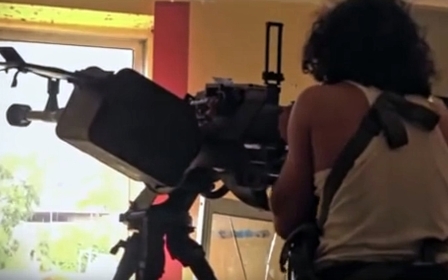Syrian-German linked to 9/11 'captured by Syrian Kurdish forces'

A Syrian-born German national accused of helping to plan the 11 September attacks has been captured by Kurdish forces in Syria, a senior Kurdish commander told AFP on Wednesday.
"Mohammed Haydar Zammar has been arrested by Kurdish security forces in northern Syria and is now being interrogated," the top official said, without providing further details.
Zammar had previously been detained by the Syrian government in the early years of the civil war, but he was freed for unknown reasons in 2014, the Washington Post reported, citing unidentified US officials.
Zammar, who is in his mid-fifties, has been accused of recruiting some of the 9/11 hijackers.
He was detained in Morocco in December 2001 in an operation involving CIA agents, and was handed over to the Syrian authorities two weeks later.
A Syrian court sentenced Zammar to 12 years in prison in 2007 for belonging to the Muslim Brotherhood, a charge that at the time could have resulted in the death penalty.
He was an influential cleric in Germany who helped arrange travel for Mohammed Atta - the head hijacker of the 9/11 attacks - to Afghanistan for al-Qaeda training, according to the Washington Post.
German officials said that Zammar frequently spoke with Atta and visited him at home while they were both living in Hamburg.
The 9/11 Commission Report, which studied why and how the 2001 World Trade Center and Pentagon attacks occurred, said Zammar “relished any opportunity to extol the virtues of violent jihad”.
Still, the Post said Zammar may not have been aware of the plot to attack the US, citing Ramzi Binalshibh's testimony - another accused facilitator of the 9/11 attacks who is currently detained in Guantanamo Bay.
Middle East Eye propose une couverture et une analyse indépendantes et incomparables du Moyen-Orient, de l’Afrique du Nord et d’autres régions du monde. Pour en savoir plus sur la reprise de ce contenu et les frais qui s’appliquent, veuillez remplir ce formulaire [en anglais]. Pour en savoir plus sur MEE, cliquez ici [en anglais].




